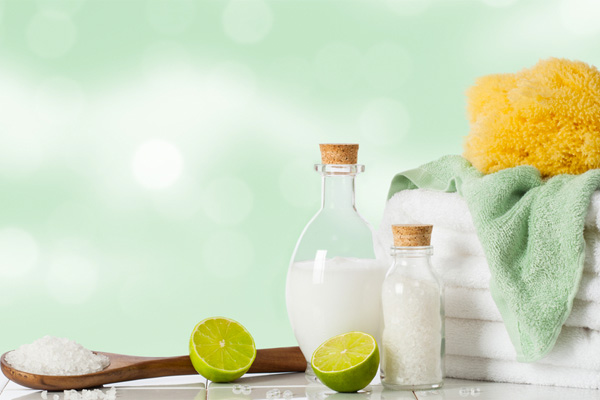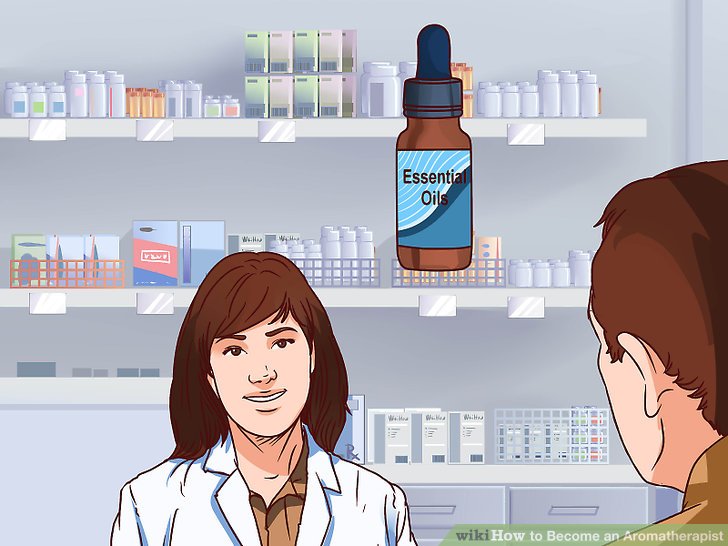What is Aromatherapy?
Aromatherapy is the art and science of utilizing naturally extracted aromatic essences from plants to balance, harmonize and promote the health of body, mind, and spirit. Also, it seeks to unify physiological, psychological and spiritual processes while enhancing an individual’s innate healing process. As a holistic practice, Aromatherapy is both a preventative approach as well as an active method to employ during acute and chronic stages of illness or ‘dis’-ease. Aromatherapy is a natural, non-invasive modality. In fact, it affects the whole person not just the symptom or disease. It assists the body’s natural ability to balance, regulate, heal and maintain itself with the correct use of essential oils.
As a matter of fact, Rene-Maurice Gattefosse, the French perfumer and chemist, coined the term “aromatherapie” in 1937 with his publication of a book by that name. His book “Gattefosse’s Aromatherapy” contains early clinical findings for utilizing essential oils for a range of physiological ailments. Gattefosse’s intention for coining the word was to distinguish the medicinal application of essential oils from their perfumery applications.
So we can interpret his coining of the word “Aromatherapie” to mean the therapeutic application or the medicinal use of aromatic substances (essential oils) for holistic healing. As the practice of aromatherapy has progressed, over the years, it has adopted a more holistic approach encompassing the whole body, mind, and spirit.
About Aromatherapy
Aromatherapy wasn’t well-known until the 11th century even though it has been around for thousands of years. In fact, steam distillation first made it possible to properly remove the essential oils from plant materials. Since then, cultures around the world have utilized aromatherapy for a wide range of functions. There is more to it than simply using essential oils; aromatherapy can be quite complex, involving carrier oils, absolutes, herbal distillates, vaporizer oils, and phytoncides. Ask the administrator of the treatment for literature on the various components and applications.
Synergy – Important Element of Aromatherapy
Synergy is an important element of aromatherapy. It is the combination of numerous essential oils that can create a more powerful effect than the oils would have on their own. Blending essential oils is such an important area of study for alternative healers. Notably, the range of possibilities is almost endless. However, it is important to always do your consultation with trained aromatherapists, as some essential oils can trigger allergies. Also, essential oils can actually be toxic if mixed improperly. Furthermore, most aromatherapy treatments with essential oils are diluted in a carrier oil of some kind. A wide range of negative side effects will result if you use too strong of a concentration of essential oils in aromatherapy.
While there is an infinite number of combinations that have been tested and used around the world, not all of them would be approved or recommended by normal doctors. However, this doesn’t mean they aren’t legitimate or effective. Pay close attention to your body and its reaction whenever you use aromatherapy as a therapeutic solution for a medical condition.
For over 5,000 years, aromatherapy has been a trusted practice
In fact, natural healers turn to aromatherapy for the many antibacterial, anti-inflammatory, and analgesic effects of aromatic essential oils.
Today, you’re likely to find over 40 different therapeutic-grade aromatherapy oils available. Some popular aromatic oils you might recognize include tea tree, lavender and peppermint oil, used in everything from toothpaste to laundry detergent.
Here are some facts about how essential oils work:
- Plants contain certain beneficial chemicals as a means of protecting themselves, including to ward off insects or rodents and defend themselves from bacteria or viruses.
- The active ingredients within the oils are taken directly from high yields of medicinal plants or herbs through a process known as distillation. The oil is mixed with alcohol to preserve their strength. The finished result is a very concentrated oily formula that can be mixed with other substances.
- Essential oils used in aromatherapy practices are usually combined with a carrier oil, such as almond, jojoba orcoconut oil, before being applied directly to the skin.
Aromatherapy uses are:
- Diffusing a combination of essential oils into the air (or just one single oil)
- Inhaling oils through the nostrils directly off a cloth or from the bottle
- Receiving massage therapyutilizing oils
- Soaking in an oil-infused bath
- Rubbing oils directly onto the skin
- Finally, enhancing a facial toner, shampoo, or conditioner with essential oils.
Importantly, research shows that when used at home, most people use aromatherapy oil candles, apply natural products containing oils to their skin or add oils directly to a soaking bath/warm shower. What types of plants produce popular essential oils used in aromatherapy? Notably, these include:
- Herbs like rosemary, thyme, oregano or peppermint
- Leaves from eucalyptus plants
- Grasses, such as lemongrass
- Fennel seeds
- Zest from fruits such as oranges, grapefruit or lemon
- Flowers, including rose or geranium
- Wood or bark from trees including cedar or pine
- Roots from ginger
- Resin from frankincense trees
- And many more
History and Interesting Facts
For thousands of years, aromatherapy essential oils have been an important part of self-care and medicinal practices. Oils were also used as perfumes, tonics, cleansers, wound salves and more. Records show that some of the earliest civilizations to use aromatherapy include the ancient Chinese, Indians, Egyptians, Greeks and Romans.
Interesting facts about the history of aromatherapy include:
- Over 2,500 years ago, Hippocrates recommended aromatic baths for overall well-being and health prevention.
- In the year 100 A.D., the famous philosopher Dioscorides mentioned aromatic oils in some of his writings.
- Ancient Egyptian priests used aromatherapy oils during religious ceremonies and also as antiseptic agents.
- Starting in the late 1800s, researchers began using botanical extracts in studies, publishing their reports in respected medical journals. French and German medical professors started using aromatherapy to fight diseases like tuberculosis and infected wounds.
- Essential oils began being used in western medicine practices in the early 19th century. Doctors started isolating the active principles of plants (identified as “active ingredient”) to use them in making prescription medications.
- French soldiers returning home from World War I were treated with oils to heal wounds, treat anxiety and lower depression.
- Aromatherapy made its way to the U.S. around the 1980s.
- Today, sales of aromatherapy lotions, candles, oils, and fragrances are higher than ever before.
How to Find a Good Aromatherapist
There are a number of different organizations that now train and certify professional aromatherapists, including the Aromatherapy Registration Council (ARC). The goal is to overcome lack of education standards; promote safe practices, and encourage the FDA to protect public safety and use of essential oils.
Completing at least 30–200 hours of training and passing an exam is part of the Aromatherapy course certification. Many training programs also require supervised hours working with patients.
Aromatherapists are typically trained in some of the following topics and practices:
- History of aromatherapy
- Profiles of 20 of the most powerful and popular essential oils
- Ensuring the quality of essential oils
- Physiology of aromatherapy (including methods of absorption, olfaction, the limbic system, the lymphatic system, the immune system and the skin)
- Treating patients with various essential oils depending on their medical conditions
- Contraindications and safety concerns of certain essential oils
Notably, the National Association for Holistic Aromatherapy offers resources on its website to locate a qualified aromatherapist in your area.
Precautions
Equally important, certain types of aromatherapy oils are not recommended depending on a person’s sensitivity or medical history. It is important to keep essential oils away from infants and children, unless otherwise noted. If you’re pregnant or breastfeeding, always make sure that any essential oil you use is safe.
Although essential oils have generally shown minimal adverse effects, potential risks include:
- ingesting large amounts/intentional misuse, which can cause toxicity
- skin irritation, especially when used in large amounts
- allergic contact dermatitis
- photosensitivity to sunlight
In general, only use oils internally when you know they’re completely pure. Medications can interact with oils – so beware. Using aromatherapy oils internally can sometimes be toxic and very harmful. Do your research. Ask a professional for their opinion if you have any concerns or questions. Always start with the lowest dose possible.
Importantly, if you have sensitive skin make sure to always dilute oils with a carrier before applying them to your skin. Look for symptoms, such as a rash, redness or swelling (especially when in the sun). Photosensitive essential oils include bergamot, lemon, lime, bitter orange and angelica root. Citrus oils and oils with menthol (including peppermint) can irritate sensitive skin, so use these carefully.
Final Thoughts to Consider
- Essential oils are increasingly popular.
- Aromatherapy works by utilizing aromatic oils that contain many different active components. In fact, there are antiseptic, antifungal, anti-inflammatory and antibacterial essential oils.
- Benefits and popular uses of aromatherapy include:
- reducing anxiety and depression,
- colds and coughs,
- fatigue,
- pain,
- PMS,
- menopause symptoms,
- nausea,
- ulcers,
- indigestion, and
- arthritis joint pain.
Lastly, pay attention to how the different oils and methods of use, and how they affect you. Explore the world of essential oils today.
Bio Hacking for a Better You
We have the most incredible bio-hacking health solution for you today! This is a 1-2 punch that will knock it out of the park. You won’t find this perfect solution to get your body in the best condition anywhere else. New science – bio-hacking – is having amazing results for so many people. We have found the solution, and it is available here!
On another note, is it time to relax and enjoy some me-time? Enjoy a glass of the finest wine from your own collection. Learn more about the BEST wine club here TODAY!
Follow me on: Instagram – @offers26 and Twitter – @msazkat




